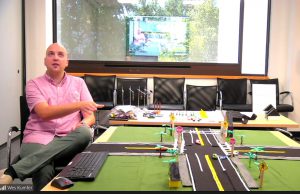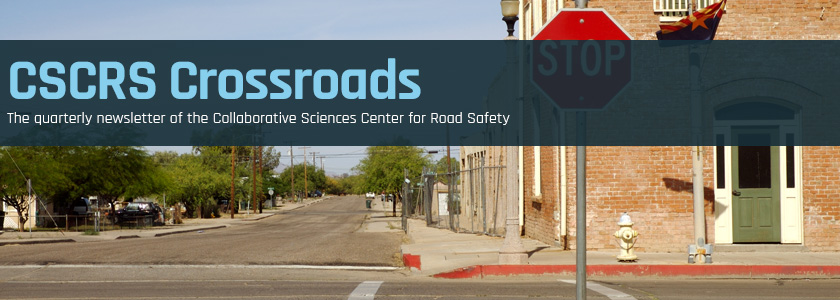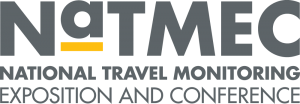Newly released CSCRS research explores strengthening Vision Zero plans
The recently completed research project “Strengthening Existing and Facilitating New Vision Zero Plans,” authored by principal investigator Kelly Evenson, UNC Department of Epidemiology, created an inventory of existing Vision Zero plans, identified features of high-quality Vision Zero plans, and developed guidance to facilitate and assist future plan-makers in developing and implementing sound injury prevention plans, with the ultimate goal of improving the U.S. traffic fatality rate. This research led to the creation of the Vision Zero Plan Library and Guidance on Vision Zero plan development. Two webinars were coordinated to present this research:
- An Oct. 20, 2020, webinar presented as part of UNC Research Week (recording available); and
- An upcoming webinar on Dec. 8, 2020, presented as part of CSCRS’s new Webinar Series – visit the page to register in advance.
Several other CSCRS research projects have also been completed recently:
- R2: An enhanced systemic approach to safety, Offer Grembek, University of California, Berkeley
- R7: Development and evaluation of vehicle to pedestrian (V2P) safety interventions, Missy Cummings, Duke University
- R11: The Influence of the built environment on crash risk in lower-income and higher-income communities, Yanmei Li, Florida Atlantic University
- R14: Creating a CSCRS clearinghouse for bicyclist and pedestrian safety-related data, Phase I: inventory & framework, Krista Nordback, UNC Highway Safety Research Center (HSRC)
- R15: Integrating spatial safety data into transportation planning processes, Chris Cherry, University of Tennessee, Knoxville
- R18: Examining potential safety risks associated with the introduction of light rail transit, Eric Dumbaugh, FAU
Visit the CSCRS Research Projects page for more research reports, info briefs, presentation materials, and related publications.
CSCRS explores impact of COVID-19 pandemic on transportation safety
Through most of 2020 CSCRS has participated in research and training activities to explore the impact of the COVID-19 pandemic on transportation safety. For example, CSCRS researcher Tabitha Combs, UNC Department of City and Regional Planning (DCRP), led the charge by creating the Shifting Streets Dataset, a resource that tracks early responses to changing demands on public space during the first five months of the pandemic. The dataset is hosted on the website of partner organization the Pedestrian and Bicycle Information Center.
Other pandemic-related activities include the following:

Visit the NC COVID-19 Mobility and Health Impacts Study site at www.c19mobilityandhealth.unc.edu.
- Noreen McDonald, UNC DCRP, spoke in a podcast and a radio interview about the effects of COVID-19 on the transportation system.
- UNC HSRC launched a new NC COVID-19 Mobility and Health Impacts Study, a partnership with UNC’s Gillings School of GlobalPublic Health, Cecil G. Sheps Center for Health Services Research, Odum Institute for Research in Social Science, and the NC State University Department of Statistics.
- Offer Grembek, UCB, presented on COVID-19 transportation safety topics during the SafeTREC weekly seminar series.
- Grembek and researcher David Ragland, also of UCB, collaborated on two policy papers related to how COVID-19 has impacted the mobility needs of an aging population.
As the devastating COVID-19 pandemic continues as of this writing, CSCRS will continue to seek out opportunities to research its impact on transportation safety.
CSCRS introduces webinar series on systems-based approach to road safety
In September 2020, CSCRS launched a new webinar series focused on multidisciplinary research and practices to advance transportation safety. The series features principles and practices related to Safe Systems and the role of systems science. It highlights CSCRS research as well as best practices in safety implementation and is intended for researcher and practitioner audiences alike.
The first webinar, “Assessing Tesla Model 3s’ Autopilot Interactions with the Driver Monitoring System,” presented by Missy Cummings, Duke, was held in September 2020. In addition to the December 2020 webinar featuring Kelly Evenson’s Vision Zero project, future webinars will feature “Crash Risk for Low-Income and Minority Populations” by Eric Dumbaugh, FAU, on Feb. 24, 2021, and the National Pedestrian and Bicycle Safety Data Clearinghouse project by Krista Nordback, UNC HSRC, on Apr. 28, 2021. Links to register and past webinar recordings are available on the CSCRS website.
NaTMEC/ITE webinar series launched
Conference postponed, changed to online format in June 2021
CSCRS researchers planning to host the National Traffic Monitoring Exhibition and Conference (NaTMEC) have partnered with the Institute of Transportation Engineers (ITE) on a series of free webinars to continue the learning and dialogue surrounding multimodal traffic monitoring programs. Two webinars have already been held:
- “Pedestrian Safety, Travel Monitoring, and Relating the Two,” held Tuesday, Sept. 15, 2020.
- “Getting at Pedestrian and Bicyclist Exposure from Three Different Approaches,” held Nov. 16, 2020.
The third webinar, “Validating and Leveraging Probe Data to Understand Travel Patterns and Identify Candidate Operations Projects,” will be held Jan. 20, 2021. Visit the NaTMEC webinars page for information on registering and updates on past webinar recordings.
Also, in April 2020, CSCRS notified NaTMEC attendees that the originally scheduled June 2020 conference was being postponed due to the COVID-19 pandemic. After additional consideration, the NaTMEC planning committee decided to pivot NaTMEC into a completely virtual event to be held June 21-25, 2021. Updates on the 2021 online event will be posted on the NaTMEC website.
NaTMEC 2022 is still on schedule to be an in-person event in Idaho.
Systems spotlight: 2020 summary
The work of CSCRS and its partners to highlight the Safe Systems approach to road safety was prominently featured in several instances in 2020:
-
- The May issue of ITE Journal devoted multiple articles to Safe Systems.
- Offer Grembek, UCB, was interviewed by Jenn Fox, Vision Zero Network, for an installment of their People Behind the Progress Series for “Talking with Offer Grembek, Transportation Researcher, about Safe Systems & Speed,” published Jul. 4, 2020.
- The USDOT Pedestrian Safety Summit, held in July 2020, featured CSCRS researchers who discussed what a Safe Systems approach means for pedestrian safety.
- Wes Kumfer and Seth LaJeunesse, both of UNC HSRC, presented the session “Safe Systems and Asset Mapping in Rural Areas” on Sept. 29, 2020, as part of the 3rd National Summit on Rural Road Safety.
- A webpage devoted to explaining Safe Systems was developed via a partnership between ITE, the National Safety Council’s Road to Zero Coalition, and members of the RTZ Safe System Working Group, which includes Kumfer.
Education and professional development: Review
CSCRS has engaged students and professionals in a variety of other learning activities over the last several months:

Wes Kumfer works with students virtually to design a safe road.
- Offer Grembek and Lisa Peterson, both of UCB, continued their partnership on a project with UCB’s Center for Cities + Schools educational initiative, Y-PLAN, to develop resources and educational content on traffic safety, Vision Zero, and Safe Systems principles to integrate into their curriculum for a ten-week program for the Engineering Leadership Academy high school students at Oakland High School, Oakland, CA.
- Wes Kumfer, UNC HSRC, presented the felt road virtual demonstration “Designing and Planning a Roadway for All” to the North Carolina A&T Summer High School Transportation Institute. Summer camp students designed their own miniature safe road by adding safety-related features like bike lanes, signs, streetlights, and more in an interactive online session.
- CSCRS researchers and staff planned and hosted the virtual 2020 NCDOT Research & Innovation Summit Oct. 13-14, 2020, which featured multiple graduate student speakers and an online gallery with student research posters.
- CSCRS launched a Jobs Board that lists opportunities for students.
- UCB announced its fall 2020 CSCRS Road Safety Fellows.
For more on CSCRS’s educational and professional development activities from the last several months, view the most recent Semi-Annual Progress Report.
Attention students! Read anything interesting lately?
If you are a current student working on CSCRS research, and you are reading or have recently read an interesting book or article that focuses on transportation safety issues, contact Jennifer Palcher-Silliman if you’d like to be featured in an upcoming CSCRS Crossroads newsletter.
CSCRS Crossroads newsletters are archived here.







